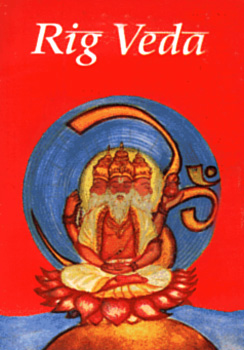 Literary sources for ancient Indian customs are considered as a vital source for understanding them. The literary sources for studying the ancient Indian customs mainly include the Sanskrit literature, Vedic texts, great epics and the Indo Aryan literature. All the prevalent customs like the traditional marriage rituals, customs related with a child`s birth, social ceremonies, and duties of family members, rites associated with death, etc. are mentioned in the various literary sources. The Rig Veda discloses the various social customs associated with marriage, birth or death of any person. Similarly, the greatest epics of the country, the Ramayana and the Mahabharata also reveal the popular ancient Indian customs.
Literary sources for ancient Indian customs are considered as a vital source for understanding them. The literary sources for studying the ancient Indian customs mainly include the Sanskrit literature, Vedic texts, great epics and the Indo Aryan literature. All the prevalent customs like the traditional marriage rituals, customs related with a child`s birth, social ceremonies, and duties of family members, rites associated with death, etc. are mentioned in the various literary sources. The Rig Veda discloses the various social customs associated with marriage, birth or death of any person. Similarly, the greatest epics of the country, the Ramayana and the Mahabharata also reveal the popular ancient Indian customs.
Sanskrit literature reveals a few popular ancient Indian customs. Like for instance, the Naisadhacarita records the practice of the bride`s eating fish and rice in a marriage ceremony. The Sisupalavadha refers to some prominent customs like welcoming guests with water, betel-leaves, greeting juniors with embrace, etc. The Harsacarita refers to the custom of holding a sword to the head by way of salute. It mentions the practice of announcing royal proclamations by drums. The Kadamban refers to these customs - playing of some musical instruments to indicate the closure of an assembly, sound of conch-shells indicating the advent of noon, and the time of bath, etc.
Some literary works in Sanskrit language also say that the Grhakrtyddhipati is a hypocritical devotee of Lord Shiva, and persecutes Brahmanas. The Paripdlaka ravages temples and villages, terrorises villagers and is up to any crime including murder of Brahmanas and slaughter of cows. The head clerk is in the habit of receiving illegal gratification. Similar is the Ganjadivira who fills his pocket with unclean money. The Niyogin (Supervisor of villages and pargands) amasses a fortune by resorting to unfair means. He is a veritable crane intent on devouring the village-fish. He persecutes the villagers, imprisons and canes them. Under him there is the Grama-divira who can forge signatures, wipe out old letters, and insert new ones. The author describes Asthana-diviras (Court-clerks) as unscrupulous taking bribe, drinking wine and visiting public houses.
The Kaldvildsa states that crafty scribes deceive others by their crooked writings. The author describes the tricks played by the travelling singer, bard, dancer and actor to rob people of their money. The goldsmith is described as resorting to subtle tricks in order to deceive people. In the next canto, the author describes the tricks of wicked persons like the astrologer, the quack passing off as a physician, and the merchant.
Ancient Indian customs that were prominent are also described in the middle Indo-Aryan Literature. Like for instance, a particular section of the Bhikkhu-patimokkha asks a monk not to enter into a sick-room with shoes on. There were several specific rules that prohibit him to commit nuisance on green grass and water and these rules for monks reflect the manners of people in the society. Regarding the conduct of women in domestic life, there were various rules under popular beliefs and practices. The works in this literature also refers to some manners and ethical behaviours. They state that a good-mannered man controls his anger. Even if angry, he does not think of unbecoming treatment, he does not express it and if he expresses it, he feels ashamed. A dignified person, following an undesirable one, has his countenance unchanged.
The literary sources of the ancient Indian customs also throw some light on the relation between the husband and the wife. Depending upon his lineage, a man used to treat his wife. The wife of a person, conscious of his high lineage, but living in a distressed condition, is stated to have been annoyed at the arrival of relatives to help him; it was considered to be dishonourable to the husband. Polygamy prevailed not only among the upper classes, but also among common men. Some village headmen appear to have had many wives. There was the usual competition between co-wives. The first wife of a person appears to have carved out a permanent niche in his heart.
The re-marriage of a woman, whose husband was missing, appears to have been in vogue. Further, most of the literary sources also mention that it was the duty of a woman to look after the welfare of all the inmates of the house. It was improper for a woman to speak to her husband in presence of superiors. The popular Brahmanical epics, the Ramayana and the Mahabharata, appear to have been adopted by the Buddhists and Jains to propagate their respective doctrines. The ideals in these epics appear to have inspired the non-Brahmanical people also. They modified the stories to suit their own purpose. The Pali Dasaratha-jataka and the Prakrit Pauma-cariya may be mentioned as instances.






































